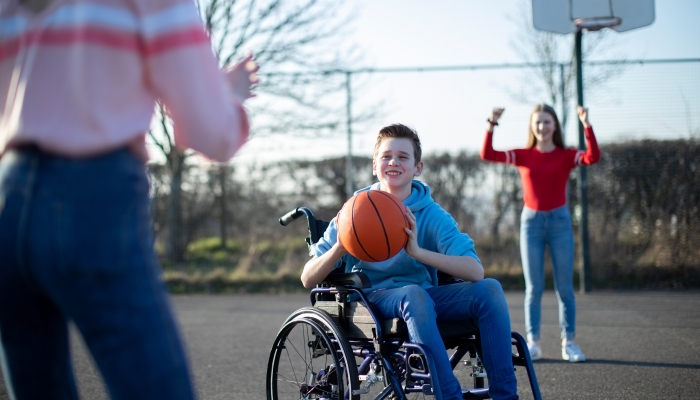

I firmly believe in creating equal opportunities for all children, regardless of their developmental level. While it’s frequently easier said than done, this is why it’s essential to understand a child’s rights at school.
Adapted physical education promotes an inclusive environment, allowing students with disabilities to participate alongside their peers. Diversity helps shape America, and it’s important to represent that in a school setting.
Thanks to laws like the Individuals with Disabilities Education Act (IDEA), children of all abilities can participate in physical education with the help of an adapted physical education specialist.
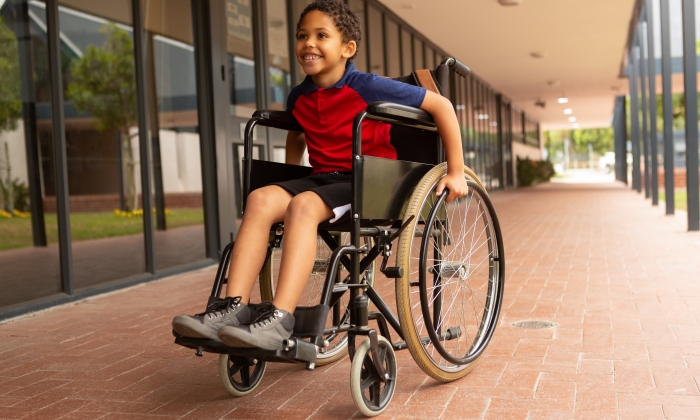
Adapted physical education (APE) goes beyond the one-size-fits-all theory of traditional physical education by offering accommodations, personalized strategies, and modifications to address all students’ diverse abilities in the least restrictive environment.
This is important for shaping the future of physical education for children who are limited in their ability to perform alongside their peers. APE provides physical education to students with disabilities in both the public and private sectors, including making facilities accessible for all individuals.
For example, schools should have ample space for wheelchairs, allowing plenty of access between potential obstacles.
Adapted physical education 1 1. Adapted Physical Education. North Carolina Department of Public Instruction. https://www.dpi.nc.gov/districts-schools/classroom-resources/exceptional-children/resources-unique-needs/adapted-physical-education (APE), also known as specially designed instruction, is instruction in physical education designed on an individual basis to meet the needs of a child with a disability.
Adapted physical educators provide APE services and instruction to students with disabilities who qualify for special education services under the Individuals with Disabilities Education Act 2 2. About IDEA. Individuals with Disabilities Education Act. 2023. https://sites.ed.gov/idea/about-idea/#:~:text=The%20Individuals%20with%20Disabilities%20Education,related%20services%20to%20those%20children. (IDEA).
In addition, APE educators provide adapted physical education services to students receiving accommodations and services under Section 504 of the 1973 Rehabilitation Act 3 3. YOUR RIGHTS UNDER SECTION 504 OF THE REHABILITATION ACT. U.S. Department of Health and Human Services. https://www.hhs.gov/sites/default/files/ocr/civilrights/resources/factsheets/504.pdf .
Formerly known as the Education of All Handicapped Children Act (EHA), which was signed into law in 1975, IDEA also helped the advancement of APE 4 4. A History of the Individuals With Disabilities Education Act. U.S. Department of Education. 2023. https://sites.ed.gov/idea/IDEA-History#:~:text=On%20November%2029%2C%201975%2C%20President,and%20locality%20across%20the%20country. by guaranteeing a free, appropriate physical education to every child with a disability in all 50 states.
“Disability is a natural part of the human experience and in no way diminishes the right of individuals to participate in or contribute to society. Improving educational results for children with disabilities is an essential element of our national policy of ensuring equality of opportunity, full participation, independent living, and economic self-sufficiency for individuals with disabilities.”
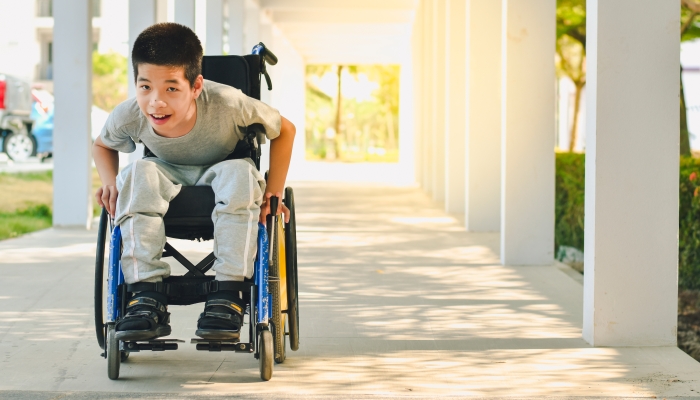
Adapted physical education aims to ensure children receive the physical education services that meet their specific needs. In addition, the goals and benefits of APE extend past the traditional physical education setting, enhancing the overall quality of life and well-being of individuals with disabilities.
APE isn’t solely about providing physical education; it’s also about students feeling welcome among their peers, regardless of their abilities.
Long-term impacts of inclusive physical education include:
A 2000 study by Goodwin et al. published in Adapted Physical Activity Quarterly found that APE participants 6 6. Goodwin, D. L., & Watkinson, E. J.. Inclusive Physical Education from the Perspective of Students with Physical Disabilities. Adapted Physical Activity Quarterly. 2000;17(2), 144–160. https://doi.org/10.1123/apaq.17.2.144 experienced good days when there was “a sense of belonging, skillful participation, and sharing in the benefits.”
However, the study also states, “Bad days were overshadowed by negative feelings revealed in the themes of social isolation, questioned competence, and restricted participation.”
Other students can significantly impact how a child feels, and it’s important to encourage students to include all children, regardless of their ability.
As an adult, it’s easy to see how students interact and remind them that most of the things they worry about don’t matter. However, in the eyes of a child, so much of what other people think affects their mentality.
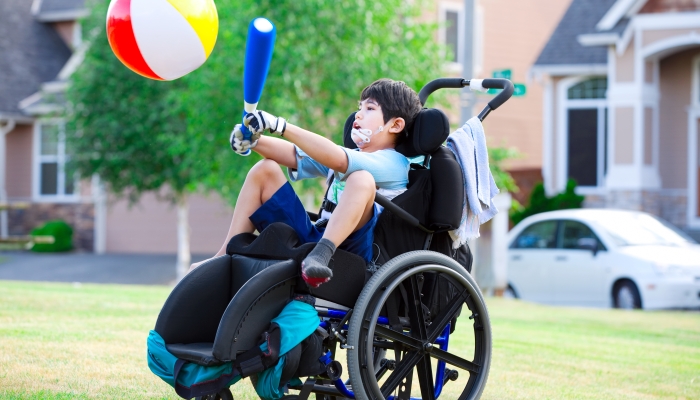
It’s always best to tailor assessment strategies to students’ needs and age, ensuring assessments are performed positively and supported. An APE teacher can involve the students in the assessment process and consider their interests and preferences, leading to a more accurate understanding of their physical abilities.
Ideally, physical education facilities will have special access to those in wheelchairs or other considerations.
Adapted physical education can be modified to address the specific needs of an individual with gross motor developmental delays. Students receive an Individualized Education Plan (IEP) outlining individualized needs. An IEP creates the opportunity for everyone to work together to improve a student’s educational results.
An IEP team will conduct a comprehensive assessment and develop IEP goals related to the student. A student’s IEP for physical education 7 7. Commonly Used APE Assessment/Evaluation Tools. North Carolina Department of Public Instruction. https://www.dpi.nc.gov/documents/ec/ape-assessmentevaluation-tools/download?attachment should give a picture of a student’s strengths and needs in PE, allowing the team to develop an appropriate IEP and ensuring the student’s participation and progress throughout the program.
In addition, understanding IEP strategies can help better prepare you for the APE process. Remember, an IEP is written specifically for the student, so it’s important to reference it as much as possible.
Finally, the IEP team decides if the student will be successful in a general physical education program without supplementary aids.
Strategies for assessing physical abilities and needs include:
Proper assessments can help an APE teacher better understand the needs of the individual, allowing them to be included to the maximum extent possible.
A physical education teacher can help make the class more inclusive by getting to know their students and understanding their challenges, strengths, and abilities. An inclusive classroom helps ensure every student is respected by their teacher and peers.
While learning about a student’s ability level, teachers can determine the best methods for including students with various disabilities in physical fitness activities.
In addition, special education services may provide adaptive equipment and new and improved technology to promote inclusivity further.
Additional inclusive teaching strategies include:
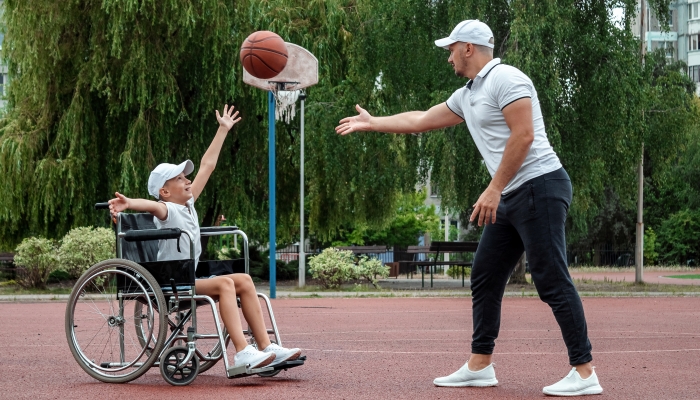
Adapted physical education teachers and therapists play a vital role in supporting the individual needs of students with disabilities. Regarding qualifications required for these professionals, it’s essential to consider both educational and interpersonal skills.
APE teachers working with physical education classes excel when they educate themselves on physical education national standards, ensuring they understand how to adjust and modify for a student’s unique abilities.
Adapted physical education specialists should have the following training and skills:
Both teachers and therapists working in the adapted physical education field should collaborate closely and share their expertise to work towards a comprehensive and coordinated approach to supporting students with diverse needs.
For example, a physical education instructor and a licensed therapist will bring different qualifications.
While a PE teacher understands the need for physical activity and fundamental motor skills, a therapist can work with a student receiving special education regarding the general curriculum and the assessment process.
Finally, it’s important to implement continuous professional development to stay updated on the best practices, advancements, and research in the field of adapted physical education. A physical education teacher has a vital role in APE, but with the help of training and education, they can help children excel who may generally have difficulty.
When implementing adapted physical education, APE teachers and therapists can help promote special needs advocacy. Through advocacy, parents and school administrators can work together to ensure their child is offered an equal opportunity.
The effectiveness of adapted physical education depends on factors like teacher training, available resources, and the school and community’s commitment to fostering an inclusive environment.
In addition, it’s important to practice ongoing evaluations and adjustments of inclusive PE programs, ensuring their long-term success.
There are resources for APE administrators looking to become better educated. For example, The National Consortium for Physical Education for Individuals With Disabilities 8 8. Sur, M. H.. Ape Collaborative. National Consortium for Physical Education for Individuals with Disabilities. https://www.ncpeid.org/ape-collaborative offers memberships to anyone involved with APE preparation, allowing you to connect with like-minded professionals.
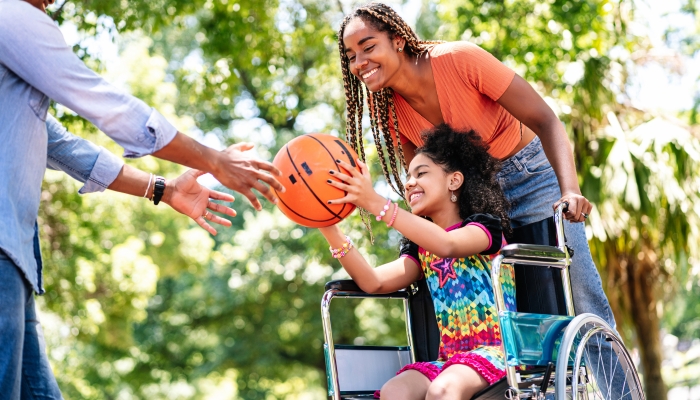
Much of the success of adapted physical education is evaluating a student’s progress and ensuring it’s an effective program. In addition, APE instructors can adapt goals and activities based on the student’s assessment.
Teachers should also use positive feedback to encourage students to continue working hard.
When evaluating a student’s success, it’s crucial to remember their individualized education program. As an adapted physical educator, reviewing individual education programs can help you remember where a student started, ensuring you have realistic expectations of their physical development.
Tools and techniques for evaluating a student’s progress in adapted physical education include:
Teachers can easily create videos of the individual performing an activity so they can reference it during class.
Remember, a student doesn’t have to become a star athlete; it’s about progress. An adapted physical education specialist can review a student’s performance and work towards additional goals.
While adapted physical education has shown significant strides in promoting inclusivity, it’s an ongoing learning curve for future success. It’s important to promote adequate ongoing training for educators, continued research, and development while providing ongoing collaboration to ensure continued success and expansion of adapted physical education programs.
Ideally, the future includes an integration of APE into mainstream educational systems, ensuring all students have an equal opportunity for quality physical education.
As schools embrace adapted physical education, they take the next step towards a more compassionate and inclusive educational environment, encouraging every student to thrive, regardless of ability.
All students should receive individualized goals regarding adapted physical education programs. If a student has severe physical disabilities, they should receive an appropriate assessment from an adapted physical education specialist and adapt activities and equipment to their abilities.
Adapted physical education can significantly contribute to developing gross and fine motor skills in children with developmental delays. However, it’s important to consider necessary modifications in special physical education classes.
General physical education helps develop the larger muscles through running and jumping. In addition, students can work on fine motor skills while grasping objects or writing in class.
Parents and guardians are the number one influencers in a child’s life and are their best cheerleaders. If your child has been working hard in their physical education class, praising them and noticing their hard work is always great. Remember, what comes easy to you may not come easy to your child.